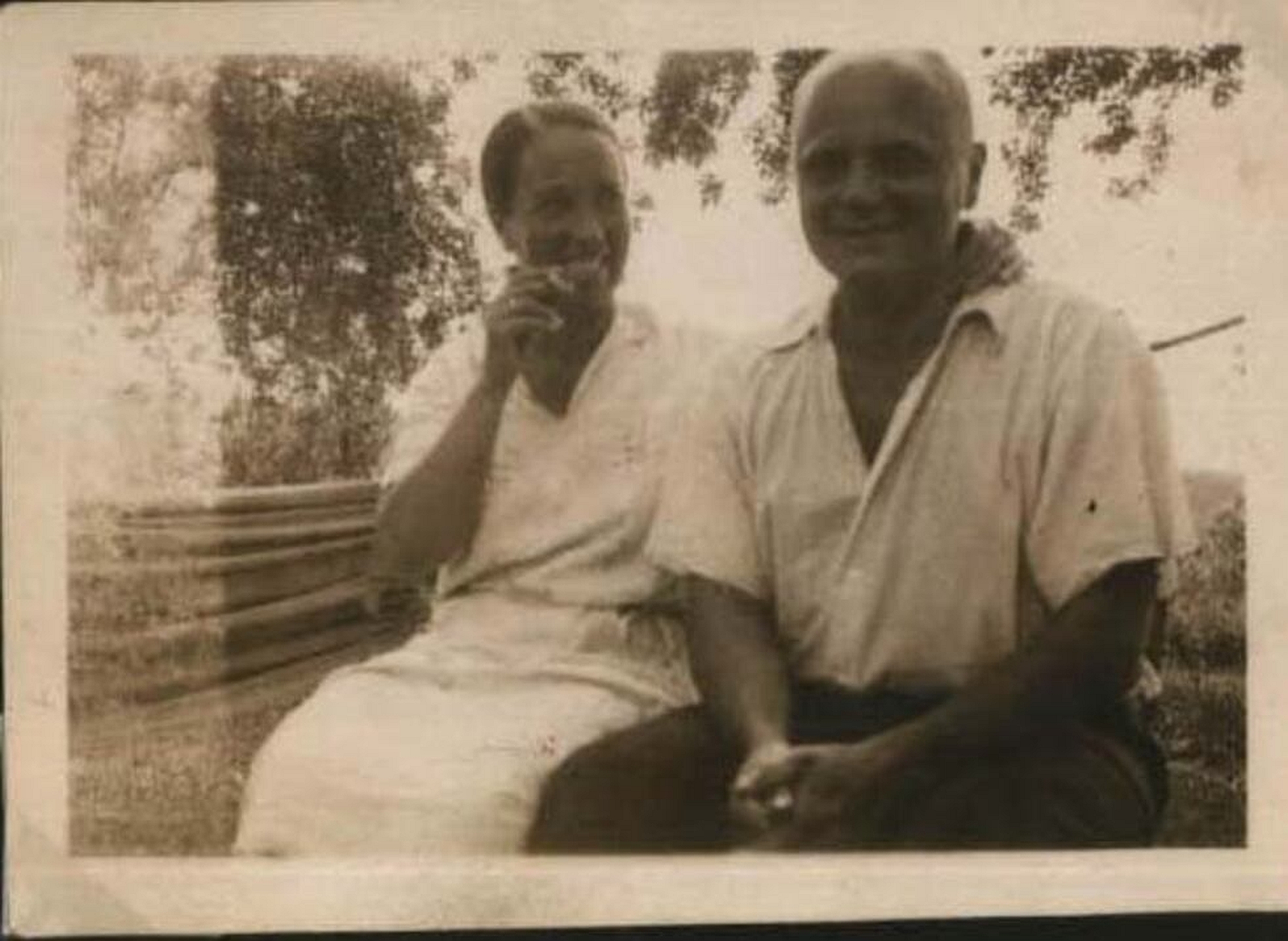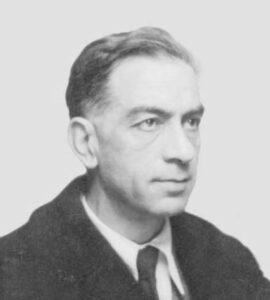Who Was the First American Casualty in the Spanish War?
The first American to die in the Spanish Civil War was a 47-year-old mining engineer from New York who had married a Spaniard, moved to Madrid in 1933, and covered the 1934 revolution for the US media. As soon as he heard about the 1936 coup, he joined the Republican army.
Leo Edwin Fleischman was born on January 14, 1889, in New York, as the son of a wealthy family with ties to the yeast empire by the same name. His father, Alois Fleischman, was an Austrian Jew who had emigrated to the United States and in 1888 married Pauline Carl, who was born in Missouri, New York, the daughter of a German journalist. After Leo’s birth, Alois and Pauline settled on the Upper West Side.
Pauline was a committed pacifist, serving as treasurer of the American Committee Against Aggression. A portrait of Pauline’s sister, Minnie Untermyer, by the painter James Jebusa Shannon now presides over the main staircase of the Glenview mansion next to the Hudson River Museum, with Minnie (née Carl) posing in a sumptuous silk gown. She was a patron of the arts, an ardent supporter of women’s suffrage who married the reputed anti-Nazi lawyer Samuel Untermyer. Leo’s uncle Samuel, meanwhile, built fabulous gardens at Greystone, the mansion where they lived in Yonkers. He had founded the Non-Sectarian Anti-Nazi League in 1933, and years later donated a portion of those gardens to the City of Yonkers. Today, the Untermyer Gardens Conservancy is an idyllic public park.
As a child, Leo Fleischman had a rebellious spirit that led him to run away from home at the age of sixteen. At family gatherings, people often told the story of the young man’s disappearance in 1905, when, as a student at City College, he vanished on his way to his algebra tutor. Leo traveled to Philadelphia, where he earned a living working in a restaurant and then enlisted in the Navy under a false identity. His parents offered a sizable reward to anyone with information about his whereabouts and searched high and low to find him. They finally located him seven months later in Virginia wearing a cadet’s uniform. Leo confessed then that he was tired of military life and wanted to return home.
The episode gives a good indication of Leo’s intrepid personality. In 1908 he enrolled at Columbia to study Mining Engineering but soon sought other horizons. He finally graduated at the age of twenty-five from the South Dakota School of Mines. An average student, he played one term with the Hardrockers, the varsity soccer team, and was known to his friends by the nickname Tubby.
The young Fleischman worked as a foreman in a gold mine in Colorado. During World War I he served as a lieutenant in the Corps of Engineers and a machine gun instructor. He then spent a few years in South America working as a supervisor in mining operations. His social conscience may have been born then when he witnessed the living conditions of the miners; perhaps that is why he left the trade to set up on his own. After learning Spanish in Peru, he traveled the continent, collecting pre-Columbian and colonial art pieces. After his death, Leo’s mother and widow donated his collection to the Brooklyn Museum of Art, for which Leo had always had a predilection.
In 1923, Leo founded the Windsor Wax Company to produce varnish and wax, a popular product for polishing wood floors. Documentation of the company’s history describes him as “an avid explorer and adventurer and a famed chemist.” Sometime after 1927, Leo—by then a well-to-do American engineer and owner of a buoyant company who resided in a centrally located apartment near Bryant Park—met Ernestina González Rodríguez, a Spanish librarian from Medina de Pomar (Burgos), who had arrived in 1926 in Nebraska to work as a Spanish teacher, but had wasted little time trading the plains for the hustle and bustle of the Big Apple. They were married in Borough Hall (Queens) in 1932, in a simple ceremony.
The following year the couple moved to Madrid. Leo quickly adapted to life in Spain and became close friends with Ernestina’s sister, María Luisa González, and her husband Juan Vicéns, both librarians. All of them shared the same democratic and republican ideals. Their strong yearning for social justice brought them into the orbit of the Communist Party. According to The Daily Worker, Leo worked as a correspondent for several media outlets during the Asturian Revolution of 1934. He also supported the miners financially. Several letters of Vicéns that are preserved in the archive of the Residencia de Estudiantes in Madrid show how the two couples worked to get information to France about the harsh government repression of the revolutionaries. They also point out that Leo accompanied two Asturian refugees who crossed the border into France to seek asylum and testify to what was happening in Asturias.
After the military coup of 1936 Leo enlisted in the Fifth Regiment of the Republican Army and went to work in an arms factory run by a friend of his, the biologist Faustino Cordón. At the factory he worked alongside the Cuban artist Wifredo Lam and Leon Meabe, whose father had founded the Socialist Youth. In August 1936 Leo, who never hesitated to give financial support to the causes he believed in, lent 490 pounds sterling to filmmaker Luis Buñuel—a good friend of Ernestina and María Luisa—“for the purchase of cinematographic material.” It is not clear if Buñuel used that money to produce a war documentary, but it is certain that Leo did not get to see the film because he died a few weeks later.
On September 30, 1936, there was an explosion at the munitions factory. The young Meabe and Faustino Cordón’s little brother—who was ten years old and was only visiting—died on the spot. Leo was admitted to the Hospital Obrero but died of septicemia in the early morning of October 17. He was 47 years old. The U.S. ambassador sent a cable to his uncle Samuel Untermyer to inform Pauline of the tragic event. The newspaper Mundo Obrero covered his well-attended funeral, describing Leo as “a great friend of Spain, an enthusiastic admirer of its people and a loyal companion in the hours of heroism and sacrifice of the Spanish popular masses.” The New Yorker would be the first American casualty of the Spanish war, although he had not died in combat but as a worker in the war industry.
Following Leo’s death, Ernestina decided to return to New York, where she disembarked on Christmas Eve 1936. The librarian from Burgos lived in Manhattan for almost two decades, devoted body and soul to the anti-fascist and anti-Francoist cause, unconditionally supported by her mother-in-law. In March 1937, David Davidson interviewed her for the New York Post. Leo’s death, she told Davidson, had not been an accident of war but a sabotage by the Fascists. Her proof for this allegation was that newspapers in Nationalist-controlled Burgos had published the news before the supposed accident occurred.
Ernestina never remarried. She lived in New York until Pauline’s death, exiled in Mexico during McCarthyism, and then moved back to Madrid, where she died in 1976. A simple tombstone in the Madrid Civil Cemetery bears the inscription “Ernestina and Leo Fleischman, in grateful partnership.”
Ana María Díaz-Marcos teaches Spanish Literature and Cultural Studies at the University of Connecticut. Translation by Sebastiaan Faber.














